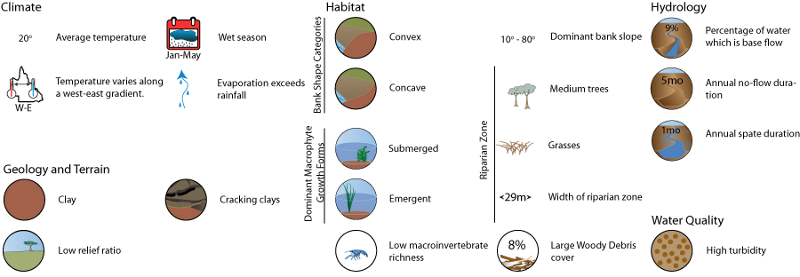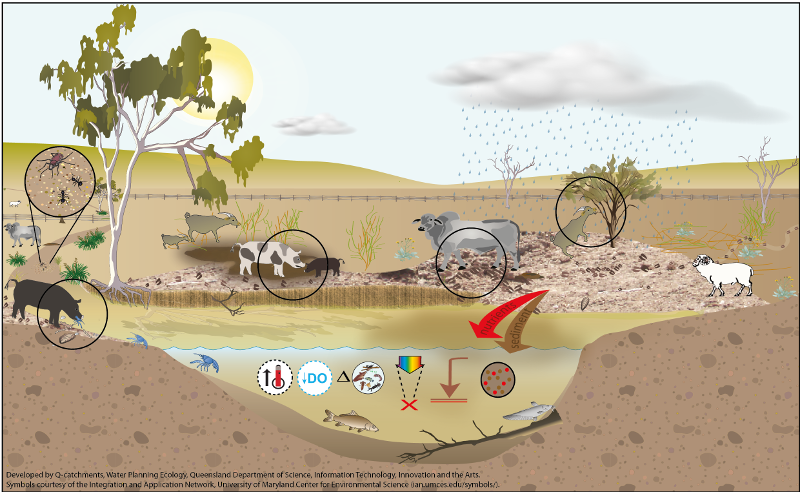|
|
Queensland Murray-Darling Freshwater Biogeographic ProvinceQueensland Murray-Darling Freshwater Biogeographic Province – Introduced fauna—riparian  Click on elements of the model or select from the tabs below
Feral animals and livestock can damage riparian areas, stream banks and dry stream beds while accessing water and other resources. Pugging, rooting and trampling can accelerate erosion and alter instream sediment dynamics. Soil compaction can also occur along stock trails, reducing water infiltration while increasing run-off.
Increased erosion produces fine sediment which can remain suspended (turbidity), while coarser sediment can settle and smother benthic habitat. This sedimentation can reduce waterhole persistence.
Dry stream beds provide habitat for invertebrates. These communities reflect the health of dry stream ecosystems.
Increasing turbidity can reduce the amount of light penetrating the water column (i.e. photic depth).This limits instream primary production.
Last updated: 22 May 2014 This page should be cited as: Department of Environment, Science and Innovation, Queensland (2014) Queensland Murray-Darling Freshwater Biogeographic Province – Introduced fauna—riparian, WetlandInfo website, accessed 18 March 2024. Available at: https://wetlandinfo.des.qld.gov.au/wetlands/ecology/aquatic-ecosystems-natural/riverine/freshwater-biogeo/murray-darling/rfauna.html |

 — Department of Environment, Science and Innovation
— Department of Environment, Science and Innovation









